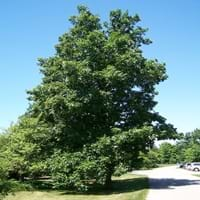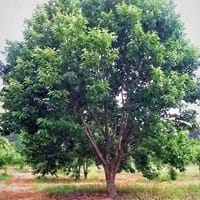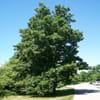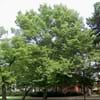Life Span
Perennial
Perennial
Origin
Northeastern United States, Mid-Atlantic United States, Southeastern United States, Central United States, Canada
North America, Northeastern United States, Mid-Atlantic United States, Southeastern United States, Canada
Types
Northern shagbark hickory, Southern shagbark hickory
Not Available
Number of Varieties
Not Available
Habitat
Woodland Garden Canopy
Deciduous forests, Forest margins
USDA Hardiness Zone
4-8
5-8
Sunset Zone
Not Available
2a, 2b, 3a, 3b, 4, 5, 6, 7, 8, 9, 14, 15, 16, 17
Habit
Oval or Rounded
Oval or Rounded
Flower Color
Not Available
Gold, Light Green, Light Yellow, White
Flower Color Modifier
Bicolor
Bicolor
Fruit Color
Not Available
Light Green, Sienna, Chocolate
Leaf Color in Spring
Not Available
Green
Leaf Color in Summer
Not Available
Green
Leaf Color in Fall
Not Available
Yellow, Yellow green, Gold
Leaf Color in Winter
Not Available
Not Available
Leaf Shape
Pinnate
Toothed
Plant Season
Spring, Summer, Fall
Spring, Summer, Fall
Sunlight
Full Sun
Full Sun, Partial Sun
Type of Soil
Loam, Sand
Clay, Loam
The pH of Soil
Acidic, Neutral
Acidic, Neutral
Soil Drainage
Well drained
Well drained
Bloom Time
Not Available
Early Summer
Tolerances
Not Available
Not Available
Where to Plant?
Ground
Ground
How to Plant?
Seedlings
Seedlings, Stem Planting
Plant Maintenance
Medium
Medium
Watering Requirements
Average Water Needs
Needs very little water
In Summer
Lots of watering
Lots of watering
In Spring
Moderate
Moderate
In Winter
Average Water
Average Water
Soil pH
Acidic, Neutral
Acidic, Neutral
Soil Type
Loam, Sand
Clay, Loam
Soil Drainage Capacity
Well drained
Well drained
Sun Exposure
Full Sun
Full Sun, Partial Sun
Pruning
Remove damaged leaves, Remove dead branches, Remove dead leaves
Cut back all stems to the same height, Pinch or prune as they grow to promote branching and bushiness, Remove damaged leaves, Remove dead branches, Remove dead leaves
Fertilizers
Apply 10-10-10 amount
14-14-14 Fertilizer, Compost, General purpose liquid or granular fertilizer
Pests and Diseases
Leaf spot, Powdery mildew, Trunk Rot, Verticillium Wilt
Chestnut Blight
Plant Tolerance
Drought
Drought
Flowers
Insignificant
Insignificant
Flower Petal Number
Not Available
Not Available
Foliage Texture
Not Available
Medium
Foliage Sheen
Not Available
Matte
Attracts
Mice, Red and Gray Squirrels
Bees, Birds, Deers
Allergy
breathing problems, Mouth itching, Sore Throat, Swelling, Throat itching
conjunctivitis, Vomiting
Aesthetic Uses
Not Used For Aesthetic Purpose
Showy Purposes
Beauty Benefits
Moisturizing
Not Available
Environmental Uses
Air purification
Air purification, Wildlife
Medicinal Uses
Analgesic, Antirheumatic
Arthritis, Cough, Sore throat, Swelling
Part of Plant Used
Sap, Seeds
Sap, Wood
Other Uses
Used as an excellent fuel, Used in pies, cakes, Used to make yellow dye, used to prepare nut milk
Decorative veneers, flooring, paneling, Used in Furniture, Used in pulpwood and lumber production
Used As Indoor Plant
No
No
Used As Outdoor Plant
Yes
Yes
Garden Design
Edible, Shade Trees
Edible, Feature Plant, Shade Trees
Botanical Name
CARYA ovata
CASTANEA dentata
Common Name
Shagbark Hickory
American Chestnut
In Hindi
Shagbark Hickory
अमेरिकी शाहबलूत
In German
Shagbark Hickory
Amerikanische Kastanie
In French
Caryer ovale
Châtaignier d'Amérique
In Spanish
Shagbark Hickory
Castanea dentata
In Greek
Shagbark Hickory
american καστανιάς
In Portuguese
Shagbark Hickory
castanea americana
In Polish
ORZESZNIK PIĘCIOLISTKOWY
Kasztan amerykański
In Latin
Carya
English castaneis
Phylum
Magnoliophyta
Magnoliophyta
Class
Magnoliopsida
Magnoliopsida
Order
Juglandales
Fagales
Family
Juglandaceae
Fagaceae
Clade
Angiosperms, Eudicots, Rosids
Angiosperms, Eudicots, Rosids
Tribe
Juglandeae
Not Available
Subfamily
Juglandoideae
Not Available
Number of Species
Not Available
Not Available
Properties of Shagbark Hickory and American Chestnut
Wondering what are the properties of Shagbark Hickory and American Chestnut? We provide you with everything About Shagbark Hickory and American Chestnut. Shagbark Hickory doesn't have thorns and American Chestnut doesn't have thorns. Also Shagbark Hickory does not have fragrant flowers. Shagbark Hickory has allergic reactions like breathing problems, Mouth itching, Sore Throat, Swelling and Throat itching and American Chestnut has allergic reactions like breathing problems, Mouth itching, Sore Throat, Swelling and Throat itching. Compare all the properties and characteristics of these two plants. Find out which of these plant can be used as indoor plant. If you are interested to decorate your house and garden, find out aesthetic uses, compare them and select the plant which will beautify your surrounding. Along with beautification, try comparing medicinal and edible uses of Shagbark Hickory and American Chestnut and you can choose the plant having best and most benefits.
Season and Care of Shagbark Hickory and American Chestnut
Season and care of Shagbark Hickory and American Chestnut is important to know. While considering everything about Shagbark Hickory and American Chestnut Care, growing season is an essential factor. Shagbark Hickory season is Spring, Summer and Fall and American Chestnut season is Spring, Summer and Fall. The type of soil for Shagbark Hickory is Loam, Sand and for American Chestnut is Clay, Loam while the PH of soil for Shagbark Hickory is Acidic, Neutral and for American Chestnut is Acidic, Neutral.
Shagbark Hickory and American Chestnut Physical Information
Shagbark Hickory and American Chestnut physical information is very important for comparison. Shagbark Hickory height is 1,830.00 cm and width 1,220.00 cm whereas American Chestnut height is 1,830.00 cm and width 2,130.00 cm. The color specification of Shagbark Hickory and American Chestnut are as follows:
Shagbark Hickory flower color: Not Available
Shagbark Hickory leaf color: Not Available
American Chestnut flower color: Gold, Light Green, Light Yellow and White
- American Chestnut leaf color: Green
Care of Shagbark Hickory and American Chestnut
Care of Shagbark Hickory and American Chestnut include pruning, fertilizers, watering etc. Shagbark Hickory pruning is done Remove damaged leaves, Remove dead branches and Remove dead leaves and American Chestnut pruning is done Cut back all stems to the same height, Pinch or prune as they grow to promote branching and bushiness, Remove damaged leaves, Remove dead branches and Remove dead leaves. In summer Shagbark Hickory needs Lots of watering and in winter, it needs Average Water. Whereas, in summer American Chestnut needs Lots of watering and in winter, it needs Average Water.





